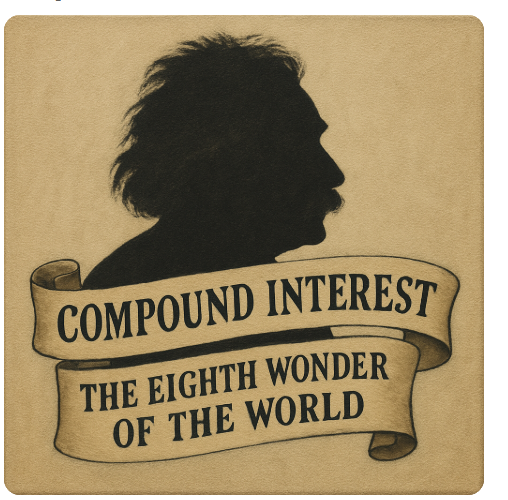by Kyle Caldwell from interactive investor
Medium-term goals
Risk appetite is a personal decision as only you can decide what level of risk you can tolerate emotionally and relative to your financial circumstances and time horizon.
If you would like greater balance in a portfolio, look to own bonds alongside shares. Multi-asset funds invest in both, with options including Vanguard LifeStrategy, BlackRock MyMap, Legal & General Investment Management’s Multi-Index funds and Aberdeen’s MyFolio Index range. The funds have different risk levels. Basically, the more exposure to shares, the higher the risk of the fund.
However, there’s also the risk of being too cautious, particularly for those with lots of time on their side. Those who take too little risk may not achieve their long-term goals.
For a medium-term time frame of five to 10 years, global funds are worthy contenders. Due to their diversification in having a spread of companies across the world, such funds are core holdings that investors can tuck away.
It’s important to consider how funds invest. Index funds and ETFs aim to deliver the return of the global stock market by following its movements. Active funds, those overseen by a professional fund manager, pick a selection of shares they think are the cream of the crop in an attempt to outperform the index, although there are no guarantees that will happen.
While both proponents of passive and active funds tend to be dogmatic, it’s important to remember that it’s not an either/or decision, as you can use both approaches.
You could choose an active fund that invests very differently from the global market, such as Fundsmith Equity or Dodge & Cox Worldwide Global Stock, and pair it with a global index fund or ETF, with options including Vanguard LifeStrategy 100% Equity, Fidelity Index World, or iShares Core MSCI World ETF USD Acc GBP SWDAwhich all invest in developed markets. For some emerging market exposure, options include HSBC FTSE All-World Index, and Vanguard FTSE All-World UCITS ETF GBP VWRL
You could also look to investment trusts F&C Investment Trust Ord FCITand Alliance Witan Ord ALW
They both own hundreds of global shares across various industries and sectors, which spreads risk.
One thing to remember is that global funds, particularly tracker funds, have a large weighting to US shares. For example, the MSCI World Index, which follows the ups and downs of 1,320 global stocks across 23 developed markets, holds 72% in US companies. Therefore, if you already have US exposure through US index funds, ETFs, or active funds, there’s the risk of doubling up.

Long-term goals
While global funds are core holdings, having smaller positions in satellite holdings investing in smaller companies, emerging markets, Asia-Pacific, and specialist themes, means you move further up the risk scale.
As a rule of thumb, having 70%-80% in core funds, and the remainder in satellite funds, helps to ensure you don’t have too much of your portfolio in adventurous areas that could all fall sharply at the same time.
Those investing for the long term – 10 years or more – have much more time on their side to ride out the greater volatility associated with higher-risk or adventurous funds.
Emerging market and Asia-Pacific funds invest in faster-growing, but less economically mature, economies. This area of the globe has more youthful populations than the West and growing middle classes. Options in interactive investor’s Super 60 list of investment ideas are: iShares Pacific ex Japan Equity Index, Fidelity Asia, Guinness Asian Equity Income, Fidelity China Special Situations Ord FCSS
Fidelity Index Emerging Markets, JPMorgan Emerging Markets Ord JMG and Utilico Emerging Markets Ord UEM0
Smaller company-focused funds are also higher risk than funds investing in larger companies, but historically the returns of smaller companies have been higher. WS Amati UK Listed Smaller Companies is a Super 60 fund, as are Fidelity Special Values Ord FSV and Diverse Income Trust Ord DIVIbut while the latter two have a bias to UK smaller companies, they invest across companies of all sizes.
Other options include funds targeting high long-term returns from specific sectors of the economy. There are numerous themes, but the main ones include artificial intelligence (AI), battery technology, cloud computing, clean energy, and demographical trends, such as the world’s ageing population.
Investing in technology shares is a well-established theme, with investment trust duo Polar Capital Technology Ord (LSE:PCT) and Allianz Technology Trust Ord (LSE:ATT) providing broad exposure.
Other funds focus on a sub-theme within the broader technology sector, such as Sanlam Global Artificial Intelligence, L&G Cyber Security ETF (LSE:ISPY), iShares Automation & Robotics ETF (LSE:RBTX), Pictet Robotics and First Trust Cloud Computing ETF (LSE:FSKY).
Another technology play, which is a much newer theme, are funds providing exposure to cryptocurrency-related companies such as VanEck Crypto & Blockchain Innovators ETF (LSE:DAGB) and Invesco CoinShares Global Blockchain ETF (LSE:BCHS).
Other examples of funds investing in themes, some of which are niche, include: Pictet Water, Regnan Sustainable Water and Waste, iShares Global Clean Energy Transition ETF (LSE:INRG), Guinness Sustainable Energy, Pictet Clean Energy Transition, EMQQ Emerging Markets Internet ETF (LSE:EMQP), Morgan Stanley Global Brands Equity Income fund, VanEck Video Gaming & eSports ETF (LSE:ESGB), iShares Healthcare Innovation ETF (LSE:DRDR) and Sarasin Food & Agriculture Opportunities.

It takes time to make a noticeable difference, which is great if you are just starting to invest.
Leave a Reply